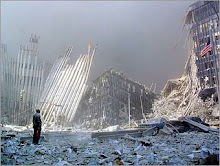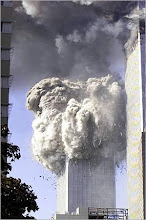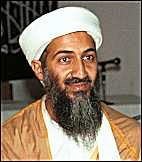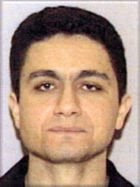What happened next...
by Grace Shaw
Lesley Boulton is the woman about to be hit on the head by a mounted police officer at Orgreave in June 1984. We found out what happened to Lesley in the moments before and after John Harris' photograph was taken.
 Lesley Boulton:
Lesley Boulton:The iconic Orgreave photo
by John Harris
Lesley Boulton is the subject of a famous photograph by John Harris who spent a year on the picket lines photographing key moments of the Miners Strike.
Lesley was a member of Women Against Pit Closures and she went along to Orgreave on 18th June 1984 - the day that became known as the Battle of Orgreave, a bloody battle between pickets and police.
In John Harris' iconic photograph, Lesley is holding a camera and cowering from a mounted policeman with a baton raised - about to crack her on the head.
Despite the photo's arresting qualities and the fact it now has iconic status, a report by the Campaign for Press and Broadcasting Freedom said it was only published in one of 17 national newspapers at the time - which they say suggests reporting bias.
At the time of the strike Lesley had teenage children. She now lives in Pitsmoor, Sheffield and has grandchildren.
Lesley explains... "The photograph shows a mounted police officer with baton raised about to hit me on the head. It was a long time ago now but never forgotten. It was at Orgreave on the outskirts of Sheffield. There was a coking plant there."
"We knew there was going to be a picket that morning - 18th June 1984. Some people I knew from PoliceWatch were going along and a friend of mine from Women Against Pit Closures and I decided that we'd go down. So I thought I'd go and take some photographs of what was going on and just monitor the situation."
Women Against Pit Closures
"It was an absolutely beautiful June day. My friend Audrey and I arrived at about 9.30am. It was really very quiet at the time, there was a big field in front of the coking plant with a huge line of police across the bottom. Up a little rise on the right was a squadron of police horses."
Orgreave, 18th June 1984

"There was a road going down the side of the field on the left. Just on the road bit was a cluster of miners who were, shall we say, "exchanging remarks" with the police."
"But basically people - men - were sitting or standing around in small groups, there was really not a lot going on. A lot of the men had taken their t-shirts off and stuffed them in their back pockets. It certainly wasn't the sort of thing you'd do if you were planning to attack a seriously armed police force - they had their long shields, all their protective gear on, batons, helmets on. You don't confront police like that in nothing but a pair of jeans and trainers."

"So I say quite categorically that there was no intention of the miners to attack the police. I myself, with a lot of other miners, was forced to run away and take refuge."
Grace Shaw: "So it's Orgreave on a sunny day in June, didn't look like it was all about to kick off."
Lesley Boulton: "There had been some stuff going off before I arrived but I don't know exactly what happened. A few stones going over - nothing major at all. There was a standoff for a while - a few stones went over, and then there was a massive cavalry charge up into the village."
"The ranks of the police who were several deep opened up and the police did a series of cavalry charges and pushed us back into the village and then blockades were set up - a police blockade at one side of the bridge and a miners blockade at the other side of the bridge."
"There's a T-junction there and a bus stop. I was attending to a man who was on the ground and seemed to have some chest injuries."
"I was standing trying to attract the attention of a police officer in the road to get him an ambulance. Because I thought, I don't know how serious it was, but it warranted some medical attention."
"The skin of my teeth"
"As I stood up to attract this policeman's attention, this officer on a police horse just bore down on me."
 Orgreave, 1984 © John
Orgreave, 1984 © John"Fortunately for me there was someone standing behind me who was also with the injured miner, who just yanked me out of the way."
"John Harris, who was taking the pictures, was using a motor drive and I've seen not just the famous photograph but the subsequent picture which shows the baton going down very close to me.
"I felt it go past me. I was just missed by the skin of my teeth really."
"That part was very, very disturbing. Because the police were actually having a very good time, they were enjoying this huge exercise of brutal authority, so I found that very disturbing.
"You got the sense that they were just out of control and quite a few miners were injured on the day. One young lad that I took a photo off had his leg broken. There were quite a lot of injuries."
GS: If the policeman's baton had hit you, would it probably have knocked you out?
LB: "Oh absolutely, without equivocation."
 Picket arrest in Orgreave
Picket arrest in OrgreaveGS: Do you think the policeman thought you were a miner?
LB: "I don't know, I was holding a camera as I was trying to attract attention and I don't know what he thought really. The police were completely carried away. Some of them were laughing and obviously enjoying this exercise of their power.
GS: Did it put you off?
LB: "No, it didn't put me off, it made me more determined to go. We were sort of getting used to the fact that Sheffield and South Yorkshire were a police state, insofar as if you wanted to go to Nottinghamshire from Sheffield (down the M1) there would be constant convoys of police."
"At every sliproad between here and Nottingham there were police roadblocks at the end of the sliproads and the police would decide whether you were allowed to go on or not."
Click on the link to listen to Lesley remembering the events that day.







No comments:
Post a Comment